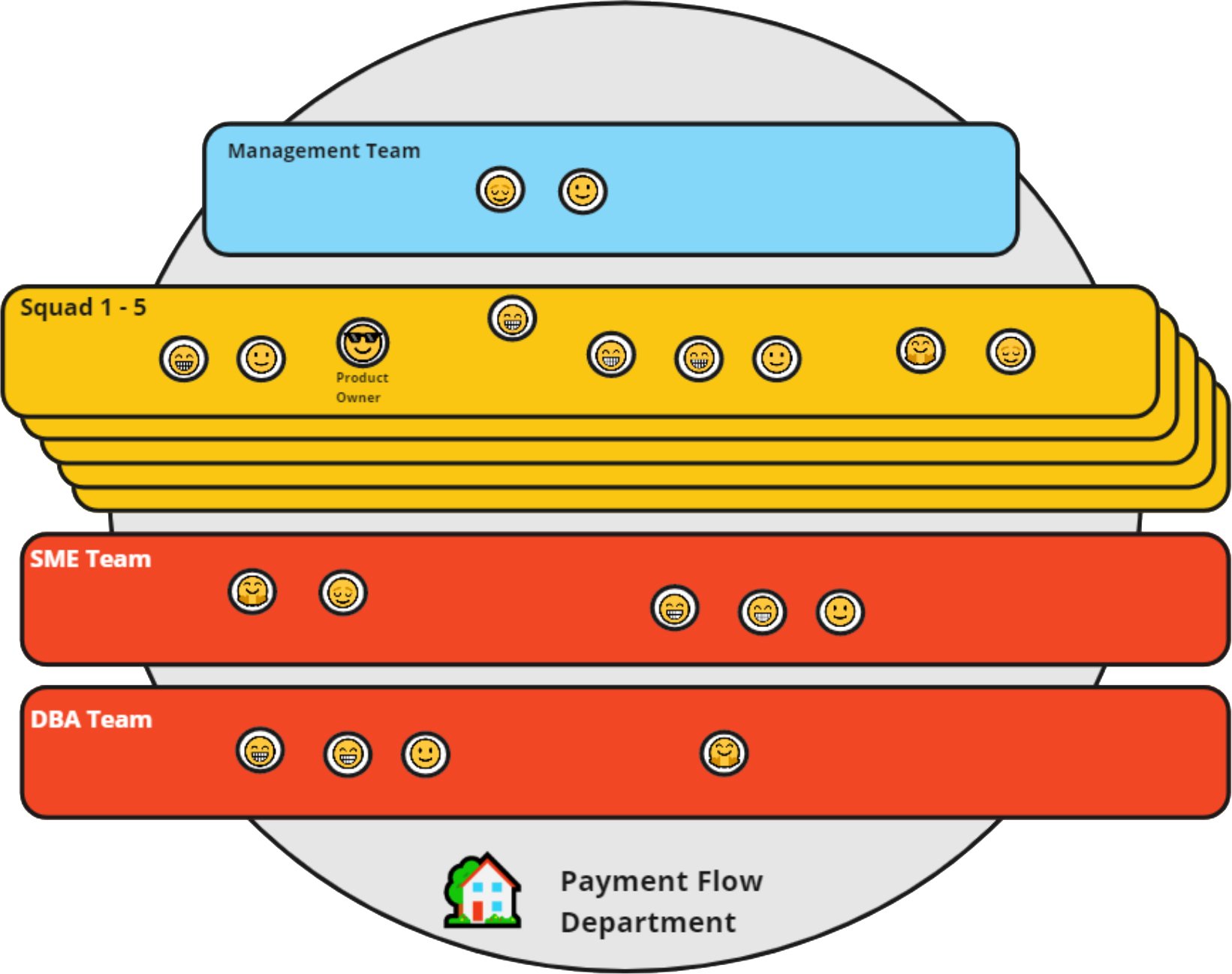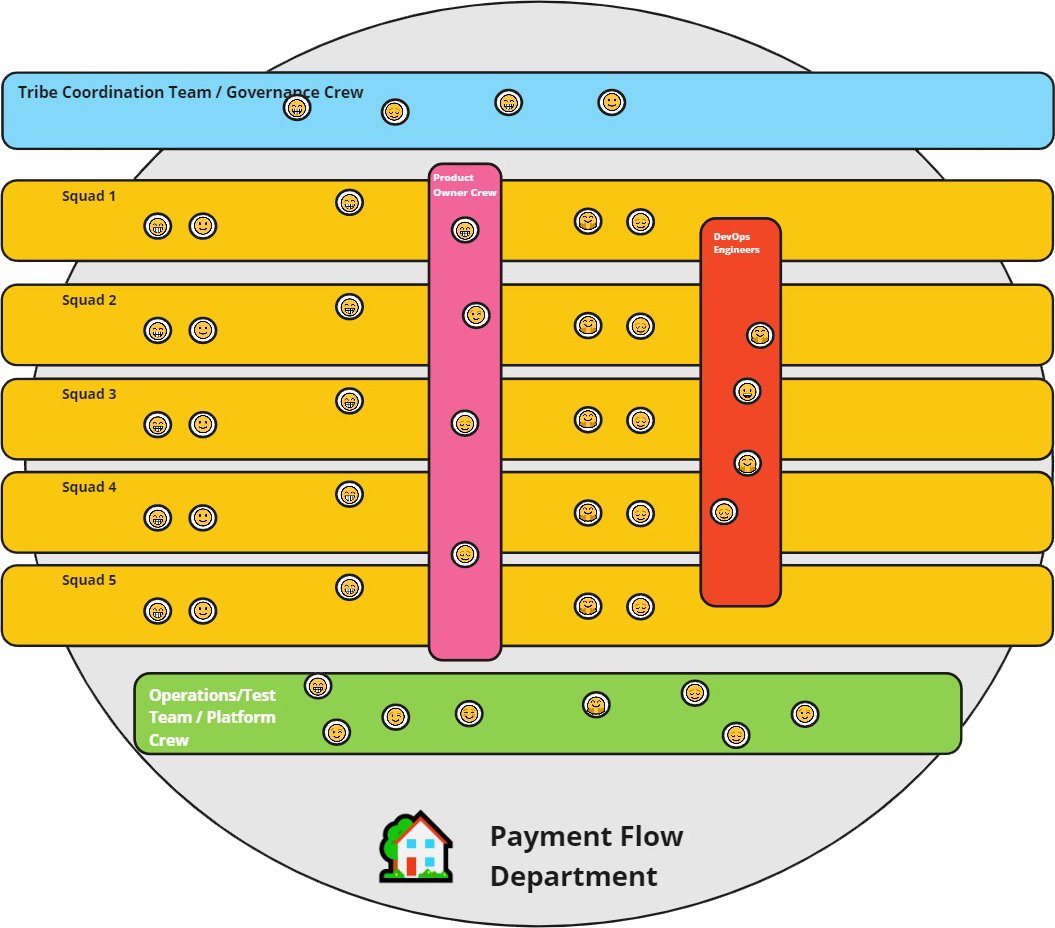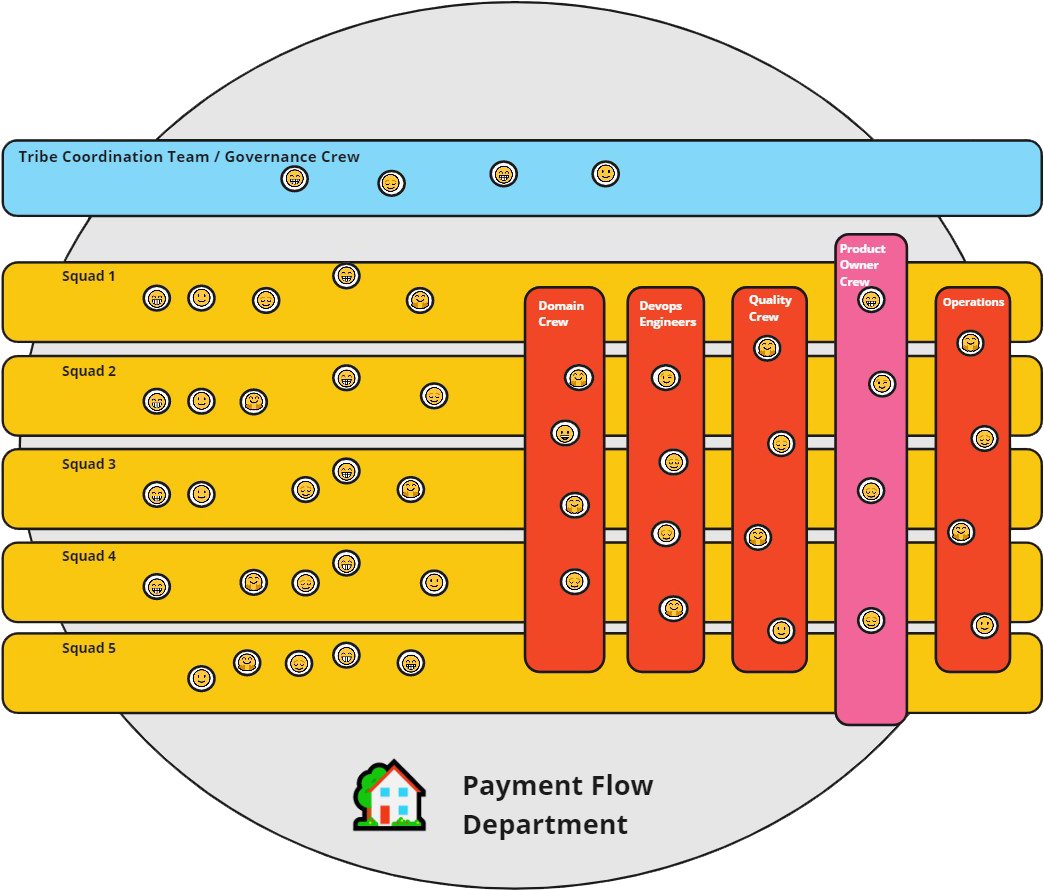Worldline’s unFIX Journey
Author: Jan-Paul Ouwerkerk
Willem-Jan Ageling and Pablo F. Sanchez are not easily fooled… With a gazillion years of experience and coaching dozens of teams, they know what they are talking about. At this moment they are spearheading the software teams of Worldline into the future.
Worldline is the biggest payment business in europe servicing 1 million plus customers with 18k employees in 170 countries. On their website they make a bold statement:
Innovate, grow, achieve more.
Rapidly changing consumer behaviors. Constantly evolving regulations. Continuous technological advances. We have you covered. Accept payments quickly, simply and securely with Worldline, and let our payment innovations grow your world.
Innovating their way of working
They are not only innovating their products and services. They are pioneering their way of working as well. 8 years ago Willem-Jan started as a Project Manager at what was then called Global Collect. Venture capitalists just had sold the company after abandoning its first (successful) experiments with Scrum and went back to traditional project management. They struggled with 12 project managers doing 50 projects at once and not finishing any on time or within budget. All projects had big dependencies and were waiting for each other, and teams were working in silos. Willem-Jan put it bluntly: it had to change otherwise we would not be here anymore. Luckily there was a good CTO that said, we have to become more agile and took in some seasoned Agile coaches to help them on their journey.
Spotify model
Within four departments responsible for the worldwide online payment product they first started to mimic the so-called “Spotify model”. Luckily they did not copy-and-paste it but gave it their own flavor. But in essence, they formed an agile-matrix organization. The one thing that stood out was that the teams soon were more and more autonomous, they decided what to do by when, and how! That made a big difference in the company. The step after that was introducing a DevOps way of working so that the teams could build and run their own features.
The Marketplace
The organization was in need of a new practical way of (re)teaming. Together with some coaches from Xebia, Worldline created and formed a so-called “Marketplace”, where people self-organized (within constraints) in teams around different goals that were set by the leadership team. So in one afternoon, the (new) teams were formed around specific goals/features. Willem-Jan was inspired by this and also used that later on.
So let's skip a few years and fast forward to 2021. Things were much better, but still, there were some significant issues. The teams were autonomous but they were (maybe even more) working in silos. And did not have the shared, overall goals in mind. To put it in other words, they were not satisfying all stakeholders.
Flexibility and the unFIX journey
The “Spotify model” has helped them to organize in a different way, but was now standing in their way to being as flexible as they could be… also the “Marketplace” was in need of some different organizational thinking…
Call it fate or luck but then in early 2022, Jurgen Appelo reached out to Willem-Jan to learn more about his Fluid Scrum Teams and to introduce his early thinking about unFIX. Jurgen asked Willem-Jan to present his thinking on the unFIXcon in September 2022 in Berlin (and he did).
During their talks, Willem-Jan got hooked. unFIX could help him to build all the organizational innovations into the core of the organizational structure. And benefit from its flexibility. In other words, the matrix would no longer stand in his way!
For Pablo, it was a warm bath when he was interviewed for an Agile Coach position in June 2022. He was following Jurgen’s work for quite some time being a “Management 3.0” facilitator for a while. He already knew about unFIX in early 2022 being one of the first members of the unFIX community. So it was a direct click with Worldline and its forward-thinking about organizational agility. Both for Willem-Jan and Pablo unFIX comes very naturally. The patterns resemble their thinking for quite some time. And now they found a language they can speak with others as well.
unFIX and Worldline
Looking from a distance at one of the four departments and their current challenges: bad alignment, maybe a bit too much autonomy (silos) and not having an overall idea where the product was heading, in general: not satisfying the different stakeholders (see figure 1 below). Willem-Jan together with Pieter Verbaarschott and Pablo dubbed that unFIX might solve some of these issues. Mainly that the Spotify model is so much focused on autonomy. So the teams asked Willem-Jan to tell more about what unFIX is and what it promised. So he did, and that was when it went very fast!
Figure 1: “The old”
Within two weeks the team came up with their first drafts (2 options, see figures 2 & 3 below) of how the organization should/could look like! So that was really powerful with the patterns of unFIX from only the website! After that, we helped them refine the picture.
Figure 2 & 3: “Two possible futures”
One of the points of discussions was with the role of Product Owners. In the old situation there was one PO per squad (in splendid isolation). And with the patterns of unFIX they thought they should form one group that services the squads (maybe as a facilitation crew or even an experience crew).
The second was that there were five experts who formed their own squads and did the most complex topics that the other teams could not do. With that, they kept the anti-pattern that the “real” work went to them and the other teams did the “easy additional stuff”. So again with the unFIX language, they said that this group of experts should facilitate the other crews. So from doing the actual nitty-gritty work they now assist the teams doing it themselves and in the process grow their capability.
The reason everybody accepted these changes (including the experts and POs) was that they were part of all the discussions from the start. They stated the challenge and discussed how the patterns of unFIX could mitigate it.
After drawing some options for the organization, they opted for option 2 and planned a Marketplace to decide together who could be in what crew that looked like this (see figure 4 below):
Figure 4: “Result of the Marketplace”
Prerequisites
One of the prerequisites was that this tribe of 60 people was already quite mature in the way of working. There was not much hierarchy and they always strive for improvements Pablo seconded that by stating that he noticed that from the start of working with the teams: they were already quite open and willing to experiment.
So when the first “unFIX picture” was drawn in November 2022 the earlier mentioned Marketplace really flourished again. Within the constraints, the people populated the newly formed crews themselves. The picture of the different crews made it even easier to do the (digital) Marketplace meeting to see who should be in which crew. Within 3 hours the new organization was in place. The main principle was that every crew should contain all roles and knowledge to serve a certain part of the product independently. Further there should be a Scrum Master role and a PO in every team.
And after that, inspired by some agile practices, the POs determine the overall goals for the next Sprint and the crews choose who picks up what goals (after of course challenging and refining the goals together). Within the crews, they then determine their own planning and align with the right stakeholders (and do a review at the end of the Sprint).
What now and next
So mid January they finished their first sprint and did their first review with the stakeholders. No strong conclusions yet, but Willem-Jan sees some benefits already. There is definitely more alignment between the teams, they are working more on common objectives. They are better equipped to work together. As a result, they are also better able to set meaningful outcome-oriented goals and ensure that the experts could volunteer for meaningful contributions to make the team flourish.
So Worldline is still in the early stages of its unFIX journey. Maybe it’s too early to draw big conclusions, but most interesting is the journey that they had the last few months. It's remarkable how easily it got picked up by the teams. Everyone understood it very quickly and the following discussions were very easy. And the ease of doing the Marketplace again and how we re-organized.
But then again the journey to agility is already there for a few years, and communication that it is a journey and that it will be like that forever is most important. And unFIX is something you can use along the whole journey, to run experiments and to change it flexibly on the way.
For the stakeholders, the biggest change is that the Sprint Planning is a joint effort and that the POs are working more as a team. They are forming an “experience crew” and named a captain. The Backlog is now integrated as one. This enables them to have better discussions on the overall goals of the product and stakeholders. This in turn results in better alignment between the POs and the crews. The discussions in the meetings of the POs are much more mature, it is not about who's doing what but more on the actual (overall) goals.
Evolve
The agile coaches monitor the way of working within the regular meetings to see what changes within the teams (and structure) might be needed already. And they have continuous discussions with all the people involved to evolve the crews. But in the end, the crews make their own discussion to change and improve. There will be regular meetings to look at the current picture of the organization and to see how it could be improved.
In regards to the (old) management team, not much has changed. They were already servant leaders who supported their teams. They are called the Governance crew now and are not in the value crews themselves.
Willem-Jan hopes that the leaders of this base will inspire the other departments to follow soon and look into the possibilities of unFIX because they have the same issues we had. And ultimately not only do unFIX within the software departments but in all the other departments as well.
Simplicity
The final words of Willem-Jan were that he really liked how easily everything of the unFIX model was understood by the people involved and that it gave us a language to discuss and improve it directly. Even when showing it to other departments they immediately understand it even if they are not doing any agile stuff. And second, it leapfrogged the use of the Marketplace we already were working with. And it really helps people who want to change and even people who do not want to change. For example who says; yes but we are doing SAFe or Spotify, that does not matter because you can use unFIX as a meta-language over any model and make it more of your own. You can even compare what it means to work in either model.
===
Many thanks to Willem-Jan Ageling and Pablo F. Sanchez (and their team) for the time they made available for this case study.





